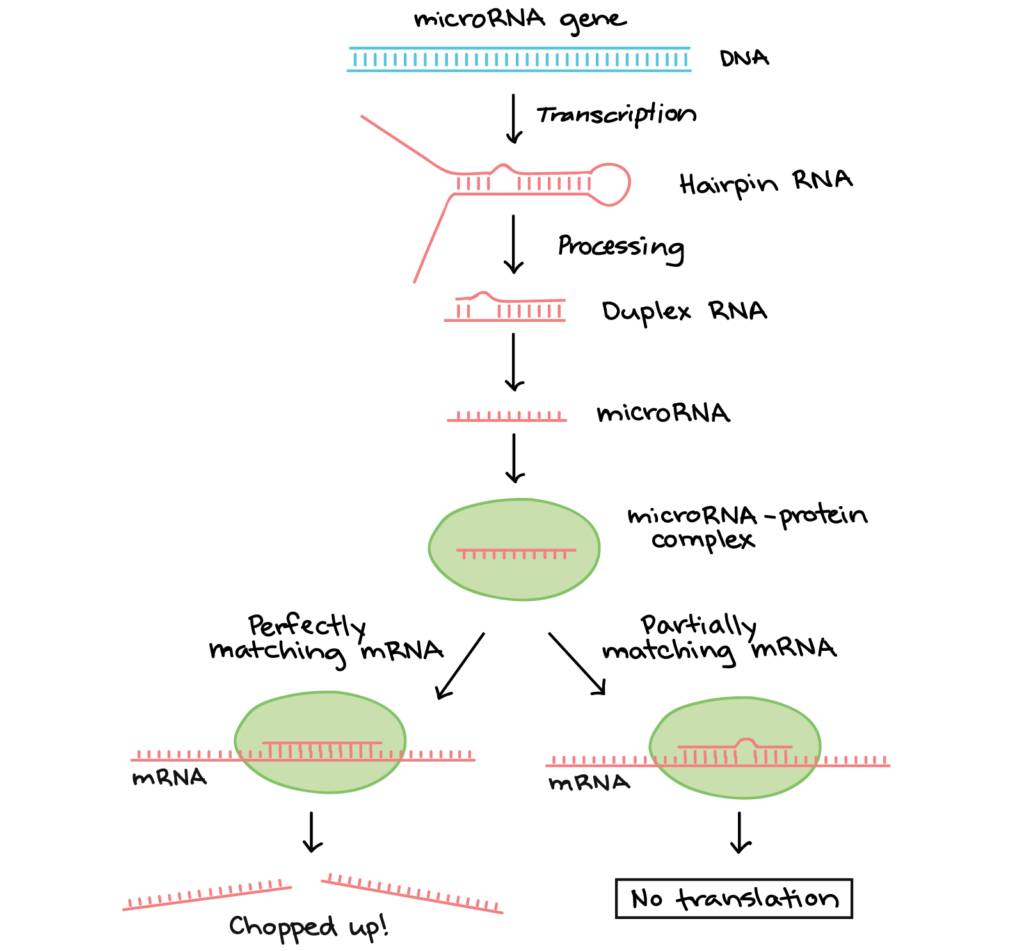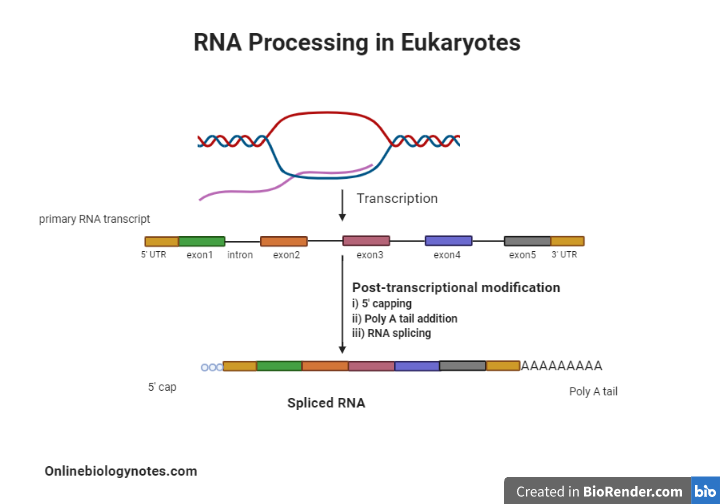Your Where does post transcriptional modification occur images are available in this site. Where does post transcriptional modification occur are a topic that is being searched for and liked by netizens today. You can Get the Where does post transcriptional modification occur files here. Get all free images.
If you’re searching for where does post transcriptional modification occur images information related to the where does post transcriptional modification occur interest, you have come to the ideal site. Our website always provides you with hints for seeking the highest quality video and picture content, please kindly hunt and find more informative video articles and graphics that fit your interests.
Where Does Post Transcriptional Modification Occur. Post-transcriptional modifications of pre-mRNA such as capping splicing and polyadenylation take place in the nucleus. Gene expression can be regulated at various stages after an RNA transcript has been produced. To activate the primary transcript undergoes many alterations- terminal base addition base modification splicing etc. For example many proteins are modified shortly after translation is completed to mediate proper protein folding or stability or to direct the nascent protein to distinct cellular compartments eg nucleus membrane.
 Rna Post Transcriptional Modification Biology For Majors I From courses.lumenlearning.com
Rna Post Transcriptional Modification Biology For Majors I From courses.lumenlearning.com
1 Modifications help the RNA molecule to be recognized by molecules that mediate RNA translation into proteins. This regulated process makes different mRNAs. One may also ask what are 3 things that need to be done modifications to mRNA after transcription before it is ready for translation. Post-translational modification refers to the changes that occur to and within a protein after it has been synthesized. To answer definitely you would need to know specifically what protein is being modified. They can extend the chemical repertoire of the 20 standard amino acids by modifying an existing functional group or introducing a new one such as phosphate.
After these modifications have been completed the mature mRNA molecules have to be translocated into the cytoplasm where protein synthesis occurs.
In the sections below well discuss some common types of gene regulation that occur. 1 Modifications help the RNA molecule to be recognized by molecules that mediate RNA translation into proteins. What is the function of the 5 cap in eukaryotes. Post-Transcriptional RNA Processing Prokaryotic DNA transcription produces messenger RNA which is necessary for transfer from the cell nucleus to the cytoplasm where translation occurs. Post-Transcriptional Processing of RNA. Post-transcriptional modifications of pre-mRNA such as capping splicing and polyadenylation take place in the nucleus.
 Source: slideshare.net
Source: slideshare.net
Post transcriptional modifications refers to RNA splicing to generate functional mRNA. Post-Transcriptional Processing of RNA. Post transcriptional modifications refers to RNA splicing to generate functional mRNA. Post-translational modification refers to the changes that occur to and within a protein after it has been synthesized. After these modifications have been completed the mature mRNA molecules have to be translocated into the cytoplasm where protein synthesis occurs.
 Source: rockland-inc.com
Source: rockland-inc.com
Post-transcriptional modifications OF RNA accomplish three things. After these modifications have been completed the mature mRNA molecules have to be translocated into the cytoplasm where protein synthesis occurs. Protein modifications such as addition of chemical groups. Post-translational modification refers to the changes that occur to and within a protein after it has been synthesized. Post-translational modifications can occur on the amino acid side chains or at the proteins C- or N- termini.
 Source: slideshare.net
Source: slideshare.net
One may also ask what are 3 things that need to be done modifications to mRNA after transcription before it is ready for translation. Describe RNA post-transcriptional modification and its purpose. This regulated process makes different mRNAs. To answer definitely you would need to know specifically what protein is being modified. What is the function of the 5 cap in eukaryotes.
 Source: slideshare.net
Source: slideshare.net
Some transcripts can undergo alternative splicing. Most of their genes produce proteins and dont have many intronic sequences post transcriptional modifications arent needed. Posttranscriptional modifications are changes that occur to a newly transcribed primary RNA transcript hnRNA after transcription has occurred and prior to its translation into a protein product. 2 During post-transcriptional processing portions of the RNA chain that are not supposed to be translated into proteins are cut out of the sequence. Post-transcriptional Modification The RNAs produced from transcription are called primary transcripts and are inactive.
 Source: khanacademy.org
Source: khanacademy.org
1 Modifications help the RNA molecule to be recognized by molecules that mediate RNA translation into proteins. What is the function of the 5 cap in eukaryotes. To answer definitely you would need to know specifically what protein is being modified. Some transcripts can undergo alternative splicing. In contrast eukaryotic DNA transcription takes place in a cells nucleus and produces what is called a primary RNA transcript or pre-messenger RNA.
 Source: slideshare.net
Source: slideshare.net
RNA processing such as splicing capping and poly-A tail addition. These alteration processes are collectively referred to. Post-transcriptional modifications of pre-mRNA such as capping splicing and polyadenylation take place in the nucleus. In the sections below well discuss some common types of gene regulation that occur. Protein modifications such as addition of chemical groups.
 Source: youtube.com
Source: youtube.com
This regulated process makes different mRNAs. Post-translational modification refers to the changes that occur to and within a protein after it has been synthesized. Post-Transcriptional RNA Processing DNA transcription occurs in a cells nucleus. After these modifications have been completed the mature mRNA molecules have to be translocated into the cytoplasm where protein synthesis occurs. Encyclopedia of Genetics 2001.
 Source: ourbiochemistry.com
Source: ourbiochemistry.com
Post-transcriptional modifications of pre-mRNA such as capping splicing and polyadenylation take place in the nucleus. For example many proteins are modified shortly after translation is completed to mediate proper protein folding or stability or to direct the nascent protein to distinct cellular compartments eg nucleus membrane. In the sections below well discuss some common types of gene regulation that occur. The three post-transcriptional modifications are. Post-transcriptional modifications of pre-mRNA such as capping splicing and polyadenylation take place in the nucleus.
Source: quora.com
This 5 cap serves as a recognition site for transport of the completed mRNA out. Posttranscriptional modifications are changes that occur to a newly transcribed primary RNA transcript hnRNA after transcription has occurred and prior to its translation into a protein product. Post-transcriptional modifications OF RNA accomplish three things. The three post-transcriptional modifications are. Since prokaryotic DNA sequence is mostly coding ie.
 Source: slideshare.net
Source: slideshare.net
The first of the post-transcriptional events is 5 end capping. Post-transcriptional modifications of pre-mRNA such as capping splicing and polyadenylation take place in the nucleus. To answer definitely you would need to know specifically what protein is being modified. 5 capping poly A tail addition and splicing. Post transcriptional modifications refers to RNA splicing to generate functional mRNA.
 Source: ib.bioninja.com.au
Source: ib.bioninja.com.au
To answer definitely you would need to know specifically what protein is being modified. Most of their genes produce proteins and dont have many intronic sequences post transcriptional modifications arent needed. They can extend the chemical repertoire of the 20 standard amino acids by modifying an existing functional group or introducing a new one such as phosphate. Protein synthesis occurs at ribosomal sites within and around the cell mostly at the endoplasmic reticulum and in the cytoplasm. Describe RNA post-transcriptional modification and its purpose.
 Source: ourbiochemistry.com
Source: ourbiochemistry.com
One may also ask what are 3 things that need to be done modifications to mRNA after transcription before it is ready for translation. Since prokaryotic DNA sequence is mostly coding ie. Most of their genes produce proteins and dont have many intronic sequences post transcriptional modifications arent needed. In prokaryotes the RNA that is synthesized during DNA transcription is ready for translation into a. Some transcripts can undergo alternative splicing.
 Source: slideshare.net
Source: slideshare.net
Post-translational modification refers to the changes that occur to and within a protein after it has been synthesized. To answer definitely you would need to know specifically what protein is being modified. Post-translational modifications can occur on the amino acid side chains or at the proteins C- or N- termini. This 5 cap serves as a recognition site for transport of the completed mRNA out. Post-translational modification can occur at any step in the life cycle of a protein.
 Source: sciencedirect.com
Source: sciencedirect.com
In the sections below well discuss some common types of gene regulation that occur. The RNA that is synthesized in this process is then transferred to the cells cytoplasm where it is translated into a protein. The 5 cap helps in eukaryotic mRNA recognition by ribosomes during translation. Posttranscriptional modifications are changes that occur to a newly transcribed primary RNA transcript hnRNA after transcription has occurred and prior to its translation into a protein product. In the sections below well discuss some common types of gene regulation that occur.
 Source: onlinebiologynotes.com
Source: onlinebiologynotes.com
Protein synthesis occurs at ribosomal sites within and around the cell mostly at the endoplasmic reticulum and in the cytoplasm. Protein modifications such as addition of chemical groups. The 5 cap helps in eukaryotic mRNA recognition by ribosomes during translation. Post-transcriptional Modification The RNAs produced from transcription are called primary transcripts and are inactive. Post-transcriptional modifications of pre-mRNA such as capping splicing and polyadenylation take place in the nucleus.
 Source: toppr.com
Source: toppr.com
After these modifications have been completed the mature mRNA molecules have to be translocated into the cytoplasm where protein synthesis occurs. Protein synthesis occurs at ribosomal sites within and around the cell mostly at the endoplasmic reticulum and in the cytoplasm. After these modifications have been completed the mature mRNA molecules have to be translocated into the cytoplasm where protein synthesis occurs. Encyclopedia of Genetics 2001. Post-translational modification refers to the changes that occur to and within a protein after it has been synthesized.
 Source: ourbiochemistry.com
Source: ourbiochemistry.com
RNA processing such as splicing capping and poly-A tail addition. Post-translational modification can occur at any step in the life cycle of a protein. Posttranscriptional modifications are changes that occur to a newly transcribed primary RNA transcript hnRNA after transcription has occurred and prior to its translation into a protein product. Post transcriptional modifications refers to RNA splicing to generate functional mRNA. Post-transcriptional modifications of pre-mRNA such as capping splicing and polyadenylation take place in the nucleus.
 Source: courses.lumenlearning.com
Source: courses.lumenlearning.com
This 5 cap serves as a recognition site for transport of the completed mRNA out. Most of their genes produce proteins and dont have many intronic sequences post transcriptional modifications arent needed. Post-transcriptional Modification The RNAs produced from transcription are called primary transcripts and are inactive. Protein modifications such as addition of chemical groups. Post-transcriptional modifications of pre-mRNA such as capping splicing and polyadenylation take place in the nucleus.
This site is an open community for users to submit their favorite wallpapers on the internet, all images or pictures in this website are for personal wallpaper use only, it is stricly prohibited to use this wallpaper for commercial purposes, if you are the author and find this image is shared without your permission, please kindly raise a DMCA report to Us.
If you find this site helpful, please support us by sharing this posts to your favorite social media accounts like Facebook, Instagram and so on or you can also bookmark this blog page with the title where does post transcriptional modification occur by using Ctrl + D for devices a laptop with a Windows operating system or Command + D for laptops with an Apple operating system. If you use a smartphone, you can also use the drawer menu of the browser you are using. Whether it’s a Windows, Mac, iOS or Android operating system, you will still be able to bookmark this website.






